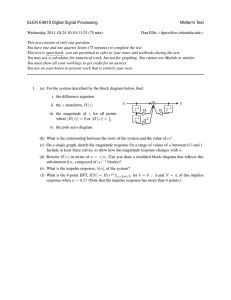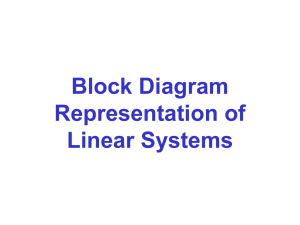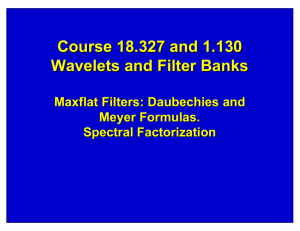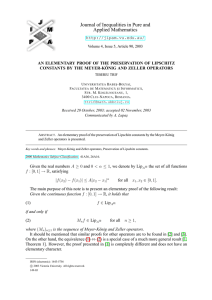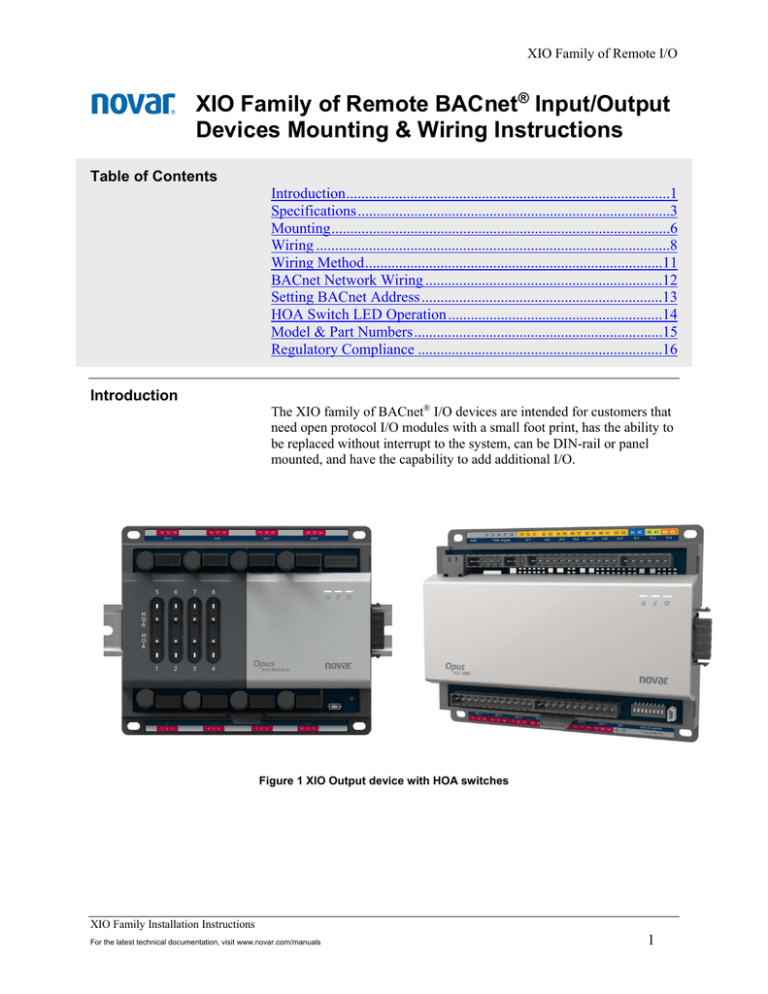
XIO Family of Remote I/O
XIO Family of Remote BACnet® Input/Output
Devices Mounting & Wiring Instructions
Table of Contents
Introduction ......................................................................................1 Specifications ...................................................................................3 Mounting ..........................................................................................6 Wiring ..............................................................................................8 Wiring Method ...............................................................................11 BACnet Network Wiring ...............................................................12 Setting BACnet Address ................................................................13 HOA Switch LED Operation .........................................................14 Model & Part Numbers ..................................................................15 Regulatory Compliance .................................................................16 Introduction
The XIO family of BACnet® I/O devices are intended for customers that
need open protocol I/O modules with a small foot print, has the ability to
be replaced without interrupt to the system, can be DIN-rail or panel
mounted, and have the capability to add additional I/O.
Figure 1 XIO Output device with HOA switches
XIO Family Installation Instructions
For the latest technical documentation, visit www.novar.com/manuals
1
XIO Family of Remote I/O
Figure 2 XIO family of Remote BACnet I/O
For reference only
Table 1 XIO Model Types
Model
xio.80
Part
Number
XIO-8U-B
Module Type
8 Universal
Inputs - BACnet
8 Relay Outputs BACnet
8 Relay Outputs BACnet - HOA
4 Universal
Inputs, 4 Relay
Outputs BACnet
Mode
IO Count
Power
Consumption
(VA)
Voltage Input Mode (010VDC)
Current Input Mode (420mA)
Resistance Input Mode
(500-100K Ohms)
Digital/ Pulse Counting
Input Mode (20Hz@50%
duty cycle)
Analog Output Mode (010VDC)
Form C Relay Outputs
8 Programmable I/O
(Can be individually
programmed as
Universal Inputs and/or
Analog Outputs)
10
8 Outputs
10
Form C Relay Outputs with
HOA switches
Universal Inputs, Analog
Outputs and Form C Relay
Outputs
8 Outputs
10
4 Outputs, 4
Programmable I/O (Can
be individually
programmed as
Universal Inputs and/or
Analog Outputs)
4 Outputs, 4
Programmable I/O (Can
be individually
programmed as
Universal Inputs and/or
Analog Outputs)
8 Inputs
10
xio.08
XIO-8DO-B
xio.08H
XIO-8DO-B-H
xio.44
XIO-4U4DO-B
xio.44H
XIO-4U4DOB-H
4 Universal
Inputs, 4 Relay
Outputs BACnet - HOA
Universal Inputs, Analog
Outputs and Form C Relay
Outputs with HOA
switches
xio.80CT
XIO-8CTI-B
8 Current
Transformer
Inputs - BACnet
CT inputs (AC Current 05Amps)
10
4
XIO Family Installation Instructions
For the latest technical documentation, visit www.novar.com/manuals
2
XIO Family of Remote I/O
Specifications
Figure 3 xio.80/xio.80CT Models
Physical Dimensions (xio.80/xio.80CT Models)
Width:
Height:
Depth:
Model Name
xio.80
xio.8CT
5.64 inches (143mm)
5.53 inches (141mm)
1.84 inches (47mm)
Weight
0.70 lbs (319g)
0.69 lbs (303g)
Figure 4 xio.08/xio.08H/xio.44/xio.44H Models
Physical Dimensions (xio.08/xio.o8H/xio.44/xio.44H Models)
Width:
Height:
Depth:
6.64 inches (169mm)
5.53 inches (141mm)
1.98 inches (50mm)
XIO Family Installation Instructions
For the latest technical documentation, visit www.novar.com/manuals
3
XIO Family of Remote I/O
Model Name
xio.08
xio.08H
xio.44
xio.44H
Weight
1.03 lbs (468g)
1.08 lbs (488g)
0.91 lbs (415g)
0.93 lbs (424g)
Operating Environment (all models)
Humidity:
Operating Temp:
Storage Temp:
5% to 95% Relative Humidity, non-condensing
-40°F to 158°F (-40° to 70°C)
-40°F to 158°F (-40° to 70°C)
Environmental/Electrical Operating Limits (xio.80CT Model)
Max. Current per Input
(Amps)
2.5
5
5
Max Number of
CT Inputs in use
8
4
8
Max. Ambient
Temperature
158°F (70°C)
158°F (70°C)
140°F (60°C)
Environmental/Electrical Operating Limits (xio.08/xio.08H Models)
Max. Load Current per
Relay Output (Amps)
2
5
5
Max Number of
Relays in use
8
1
8
Max. Ambient
Temperature
158°F (70°C)
158°F (70°C)
131°F (55°C)
Environmental/Electrical Operating Limits (xio.44/xio.44H Models)
Max. Load Current per
Relay Output (Amps)
2
5
5
Max Number of
Relays in use
4
1
4
Max. Ambient
Temperature
158°F (70°C)
158°F (70°C)
140°F (60°C)
Operating Voltage (all models)
22VAC - 28VAC, 50/60Hz
Power Supply (all models)
Power and universal inputs are classified as NEC Article 725 Class 2
(power limited)
Power Consumption (per model)
Refer to Table 1 XIO Model Types for power consumption per model
XIO Family Installation Instructions
For the latest technical documentation, visit www.novar.com/manuals
4
XIO Family of Remote I/O
Input/Output Ratings (Class 2)
Universal Inputs:
Thermistor Mode:
Novar refrigeration 2K, useable range -49 to 102F (-45 to 39C)
PRECON Type 2, 10K, useable range 14 to 212F (-10 to 100C)
PRECON Type 3, 10K, useable range 14 to 212F (-10 to 100C)
Honeywell 20K, useable range 41 to 186.8F (5 to 86C)
Custom Thermistor Table, accuracy = +/2% of reading.
Voltage Mode:
0-10VDC, Input impedance > 5Kohms, Accuracy = +/- 2% of full scale
Current Mode:
4-20mA, Input impedance approximately 523 ohms (+/-10%), Accuracy
= +/-1% of span. Input supports current loop devices having a loop
compliance of 10V or less.
Resistance Mode:
500 – 100K Ohms, Accuracy +/- 2% of reading over 1K - 100K Ohm
range.
Digital/Pulse Counting Mode:
Open circuit voltage = 3.35VDC (+/-10%), Dry contact wetting current >
4mA, Maximum pulse counting frequency = 20Hz @ 50% duty cycle.
Total Input Impedance >10K ohms
Analog Output Mode:
Minimum output range = 0.1 to 10.5VDC Accuracy = Not less than +/2% of span Resolution = Not less than 100mV Load Impedance > 2000
ohms
Relay Outputs:
Fused 250 VAC, 5 AMPS, SPDT (Single Pole Double Throw). Each
output has normally closed and normally open contacts.
NOTE: Use Cooper Bussmann type S500-5A or similar.
NOTE: See Environmental/Electrical Operating Limits for more
information
Current Transformer Inputs:
Range = 0- 5A, Accuracy = +/-5% of span.
Resolution = 100mA
LEDs (all models)
Indicates power (steady on)
Indicates BACnet connectivity (blinks with communications)
Indicates module health status (continuous blink = good health)
XIO Family Installation Instructions
For the latest technical documentation, visit www.novar.com/manuals
5
XIO Family of Remote I/O
LEDs (models with HOA switches)
LEDS are on solid when relay coil is in its energized state (actual output
state depends on wiring configuration)
Safety and Precautions
Observe all national and local electrical codes during installation
Mounting
The XIO device may be mounted in any orientation on a panel or a DINrail but must be in a position that allows clearance for wiring or
servicing.
WARNING!
Electrical Shock Hazard! Can cause severe injury, death or
property damage. Disconnect power supply and load power sources
before beginning wiring or making wiring connections to prevent
electrical shock or equipment damage.
Din Rail Mounting
Table 2 Din Rail Mounting
Step
Procedure
1
Holding the device with its top tilted in towards the DIN rail, hook the
top ridge of the DIN rail channel on the back of the controller onto
the top of the DIN rail.
Gently press down on the bottom half of the XIO device to allow the
DIN latch to engage under the DIN rail bottom edge.
2
DIN Latch Release
Figure 5 XIO device DIN Latch Release
XIO Family Installation Instructions
For the latest technical documentation, visit www.novar.com/manuals
6
XIO Family of Remote I/O
Din Rail Un-Mounting
Table 3 DIN Rail Un-Mounting
Step
1
2
3
4
Procedure
Remove all wiring connectors from the device to expose DIN latch
release
Pull down DIN latch release with one hand to release the fastener
from the DIN rail.
Lift the bottom of the controller away from the DIN rail with your
other hand.
Unhook the top ridge of the DIN rail channel on the back of the
controller from the top of the DIN rail.
NOTE!
Use caution when pulling the DIN latch release! Over extending the
DIN latch release can damage the resistance spring of the mechanism.
Panel Mounting
Figure 6 xio.80/xio.80CT Modules Mounting Hole Dimensions
XIO Family Installation Instructions
For the latest technical documentation, visit www.novar.com/manuals
7
XIO Family of Remote I/O
Figure 7 xio.08/xio.o8H/xio.44/xio.44H Modules Mounting Hole Dimensions
Table 4 Panel Mounting
Step
1
2
Procedure
Position the base of the product level against the panel wall and mark
the wall to show the location of the corner holes.
The XIO I/O device mounts using four screws inserted through the
corners of the base. Fasten securely with four No. 6 or No. 8
machine or sheet metal screws.
Wiring
A removable terminal block is used to make all wiring connections to the
XIO device. Attach all wiring to the appropriate terminal blocks. All
wiring must comply with applicable electrical codes and ordinances, or
as specified in installation wiring diagrams (reference Wiring Method
section).
Users have the option to connect devices via daisy chain (using the
supplied removable terminal block) or connect devices via the bus
connectors (on the right (female) and left (male) side of the device).
XIO Family Installation Instructions
For the latest technical documentation, visit www.novar.com/manuals
8
XIO Family of Remote I/O
NOTE!
Bussed installation of XIO Remote I/O is limited to a maximum of
five (5) modules
NOTE!
The RCC-1081 can also connect to the XIO power and
communication bus (edge) connectors, not to exceed a maximum of
five (5) modules on 1 bus.
NOTE!
If the bus connector method is being used, then the supplied 5position terminal block cannot be used when attaching additional XIO
devices.
Terminal Block Wiring
Figure 8 XIO Devices linked via Daisy Chain
XIO Family Installation Instructions
For the latest technical documentation, visit www.novar.com/manuals
9
XIO Family of Remote I/O
+A
SH
-B
AC1
AC2
Figure 9 XIO Devices linked via Bus Connector
Figure 10 Terminal Label/PIN configuration for the XIO-8U-B
Figure 11 Terminal Label/PIN configuration for the XIO-8CTI-B
Figure 12 Terminal Label/PIN configuration for the XIO-8DO-B and XIO-8DO-B-H
XIO Family Installation Instructions
For the latest technical documentation, visit www.novar.com/manuals
10
XIO Family of Remote I/O
Figure 13 Terminal Label/PIN configuration for the XIO-4U4DO-B and
XIO-4U4BDO-B-H
WARNING!
Electrical Shock Hazard! Can cause severe injury, death or
property damage. Disconnect power supply and load power sources
before beginning wiring or making wiring connections to prevent
electrical shock or equipment damage.
NOTE!
For multiple controllers operating from a single transformer, the same
wire of the transformer secondary must be connected to the same
power input terminal in each controller.
The total power draw for all modules sharing the same transformer
must not exceed 100VA.
Wiring Method
Each terminal block can accommodate the following gauges of wire:
— Single wire: from 22 AWG to 14 AWG solid or stranded
— Multiple wires: up to two 18 AWG stranded
NOTE!
When attaching two or more wires to the same terminal, other than 14
AWG (2.0 sq mm), be sure to twist them together. Deviation from this
rule can result in improper electrical contact.
Table 5 Preparing wiring for terminal blocks
Step
1
Procedure
Strip 1/2 in. (13 mm) from wires to be attached at one terminal.
XIO Family Installation Instructions
For the latest technical documentation, visit www.novar.com/manuals
11
XIO Family of Remote I/O
½”
2
3
Cut a single wire to 3/16 in. (5 mm). Insert the wire in the required
terminal location and tighten the screw.
If two or more wires are being inserted into one terminal location,
twist the wires together a minimum of three turns before inserting
them.
4
Cut the twisted end of the wires to 3/16 in. (5 mm) before inserting
them into the terminal and tightening the screw.
5
Pull on each wire in all terminals to check for good mechanical
connection.
BACnet Network
Wiring
A two-conductor shielded cable (reference Novar Part Numbers in Table
7) should be used to make the BACnet MS/TP Network Communications
connections from the Opus Executive Controller to the terminals on the
left side of the XIO device.
The BACnet network should originate from the main Opus Executive
Controller and connect to the XIO device with the supplied 5 position
XIO Family Installation Instructions
For the latest technical documentation, visit www.novar.com/manuals
12
XIO Family of Remote I/O
terminal block. Multiple devices can be connected via daisy chain wiring
or bussed devices. Stubs or branches off the BACnet network are not
allowed.
In order to guarantee the network performance of each BACnet segment,
the BACnet network segments from the Opus Executive Controller
should contain only XIO device modules or other Novar approved
BACnet MS/TP devices.
NOTE!
Bussed installation of XIO Remote I/O is limited to a maximum of
five (5) modules
NOTE!
Network termination and/or biasing resistors should NOT be applied
to any Opus BACnet installation.
NOTE!
The baud rate for the XIO devices is fixed with 38400 baud.
NOTE!
Do not exceed the maximum recommended length (1200 M / 4000 ft.)
for any BACnet segment.
Setting BACnet
Address
Every XIO device comes from the factory set to a BACnet address of 0.
Each controller must be assigned a unique BACnet MAC address
(ranging from 4 through 254) in order for the Opus xcm Executive
Controller to be able to identify and communicate with it.
NOTE!
Address zero (0) cannot be used for controllers
XIO Family Installation Instructions
For the latest technical documentation, visit www.novar.com/manuals
13
XIO Family of Remote I/O
Users must set the unique BACnet MAC address for the XIO device
using the eight (8) DIP switches on the front of the module.
To set the BACnet address of an XIO device using the DIP switches:
Find an unused address on the MS/TP network to which the controller
connects.
Locate the DIP switch bank on the front of the Controller that is labeled
MAC Address.
With the XIO device powered down, set the DIP switches for the
BACnet address you want. Add the value of DIP switches set to OFF
(down) position to determine the MAC address (see Table 6). Example:
if only DIP switches 1, 3, 5, and 7 are in the OFF (down) position the
BACnet address would be 85 (1 + 4 + 16 + 64 = 85).
Table 6 DIP Switch Values for MS/TP MAC Address
DIP
VALUE (when in
OFF position)
1
2
3
4
5
6
7
8
1
2
4
8
16
32
64
128
HOA Switch LED
Operation
For output modules equipped with HOA switches, the LED will rapidly
blink on and off if the HOA is in either the Hand (H), or Off (O)
positions to notify that the device is not operating in automatic control.
When the switch is in the Auto (A) position, the LED will be
continuously on or off, to match the status of the output relay coil.
In Opus software, the position of the HOA switches can be read while
viewing the points folder of the XIO device. Therefore, if the device is
overridden, you have a method of seeing that in the software. If needed,
alarms can be set up whenever loads are put into override.
XIO Family Installation Instructions
For the latest technical documentation, visit www.novar.com/manuals
14
XIO Family of Remote I/O
Model & Part
Numbers
Table 7 Novar Part Numbers
Part No.
XIO-8U-B
XIO-8DO-B
XIO-8DO-B-H
XIO-4U4DO-B
XIO-4U4DO-B-H
XIO-8CTI-B
709031000
730090000
770067000
Product Description
8 Universal Inputs - BACnet
8 Relay Outputs - BACnet
8 Relay Outputs - BACnet - HOA
4 Universal Inputs, 4 Relay Outputs - BACnet
4 Universal Inputs, 4 Relay Outputs - BACnet - HOA
8 Current Transformer Inputs - BACnet
Two-conductor shielded cable, RS-485 (1000 foot reel)
24-VAC Transformer (40 VA)
24-VAC Transformer(100VA)
XIO Family Installation Instructions
For the latest technical documentation, visit www.novar.com/manuals
15
XIO Family of Remote I/O
Regulatory
Compliance
This device has been tested and found to be in compliance with the
requirements set forth in UL 60730, Automatic Electrical Controls for
Household and Similar Use, and is recognized by Underwriters
Laboratories, Inc., for installations in the United States.
This device has been tested and found to be in compliance with the
requirements set forth in C22.2, No. 24-93, Temperature-Indicating and
Regulating Equipment, and is recognized by Underwriters Laboratories,
Inc., for installations in Canada.
This device has been tested and found to be in compliance with the
requirements set forth in C-Tick.
Federal
Communications
Commission (FCC)
This device complies with Part 15 of the FCC Rules. The product meets
emissions requirements for product specific standards EN
55022/FCC/IC, Class B. Operation is subject to the following two
conditions: (1) This device may not cause harmful interference, and (2)
This device must accept any interference received, including interference
that may cause undesired operation.
NOTE!
This device has been tested and found to comply with the limits
established for Class B digital devices. It may be used in a residential
environment and is intended to be used in a commercial environment.
CAUTION!
Any changes or modifications not expressly approved by Novar could
void your authority to operate this equipment.
Canadian
Department of
Comms (DOC)
NOTE!
This Class B digital apparatus meets all requirements of the Canadian
Interference-Causing Equipment Regulations.
Cet appareil numerique de la Classe B respecte toutes les exigencies
du Reglement sur le material broilleur du Canada.
Waste Electrical &
XIO Family Installation Instructions
For the latest technical documentation, visit www.novar.com/manuals
16
XIO Family of Remote I/O
Electronic Equip
NOTE!
Customers are advised to dispose of this product at the end of its
useful life according to applicable local laws, regulations, and
procedures.
Conformité
Européenne (CE)
NOTE!
EMC requirements - CE (European Union) conformity with the
appropriate IEC standards referenced in UL 60730.
LVD requirements - CE (European Union) conformity with UL 60730
which is aligned with IEC 60730.
Opus® is a Registered Trademark of Honeywell International
BACnet® is a registered trademark of American Society of Heating, Refrigerating and Air-Conditioning Engineers (ASHRAE)
The material in this document is for information purposes only. The content and the product it describes are subject to change
without notice. Novar makes no representations or warranties with respect to this document. In no event shall Novar be liable for
technical or editorial omissions or mistakes in this document, nor shall it be liable for any damages, direct or incidental, arising out of
or related to the use of this document. No part of this document may be reproduced in any form or by any means without prior
written permission from Novar.
Copyright © 2016 by Honeywell International, Inc. All Rights Reserved.
Novar
6060 Rockside Woods Blvd.,
Cleveland, OH 44131
Phone: 1.800.348.1235
www.novar.com
XIO Family Installation Instructions
For the latest technical documentation, visit www.novar.com/manuals
17

